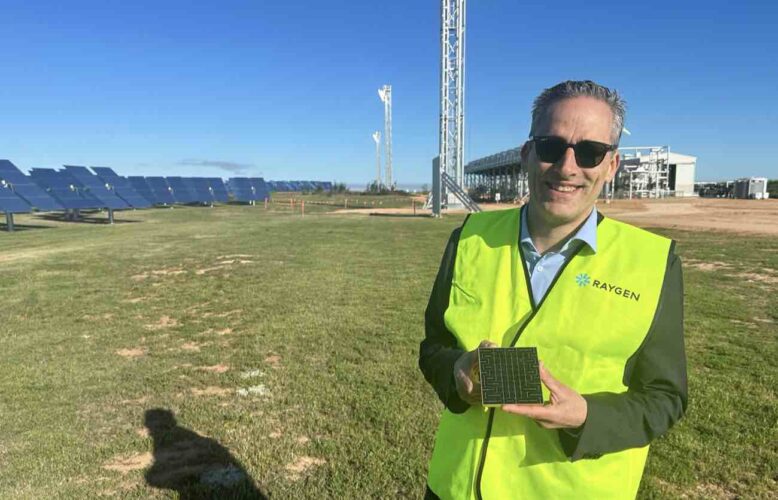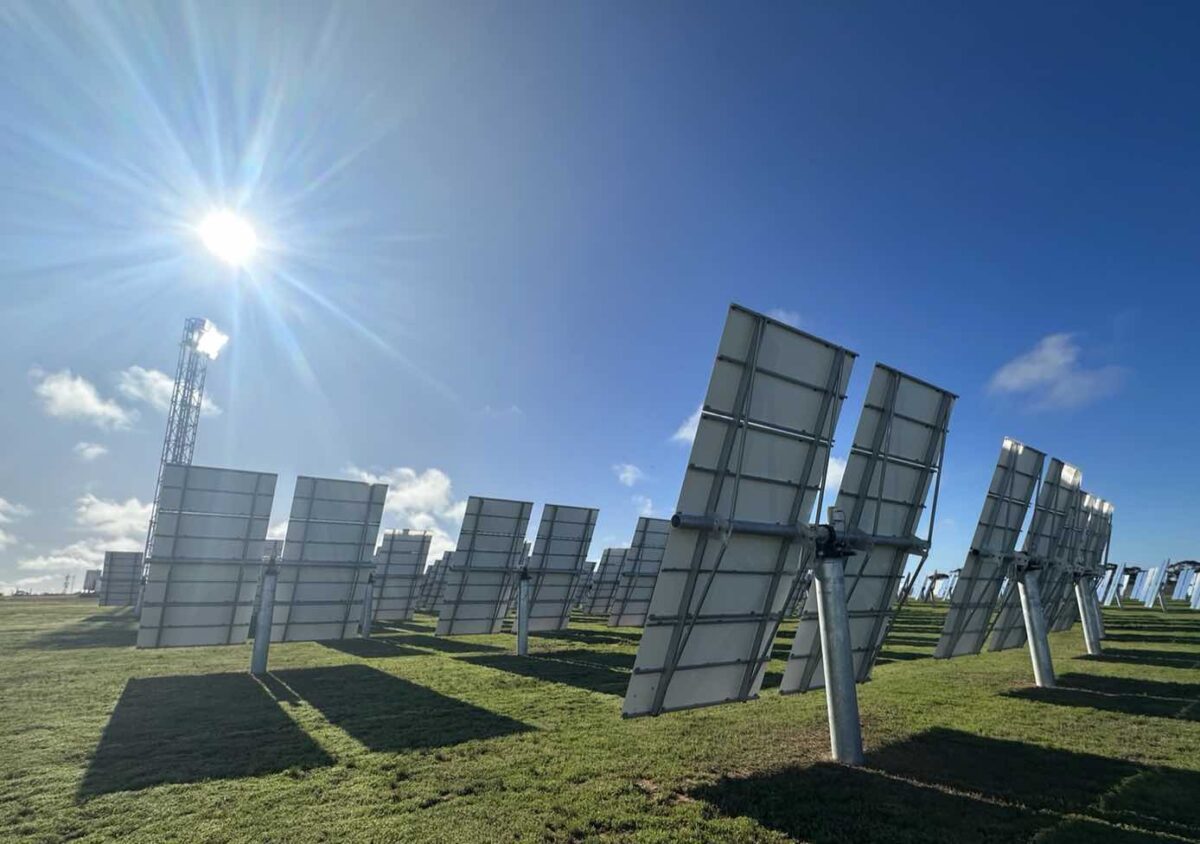The Australian Renewable Energy Agency has agreed to tip in another $10 million into Australian start-up RayGen as the company formally opens what it describes as the world’s “largest next-generation” long duration energy storage and solar project.
The company marked on Thursday the opening of its first solar and storage power plant in Carwarp, Victoria, which combines 4MW of high efficiency photovoltaic solar and 2.8MW and 50MWh of long duration storage.
The company, which started out in 2010 as a hi-tech solar hopeful before its grand plans were derailed by the cost plunge in conventional solar PV, first unveiled its storage proposal in 2019 and is now backed by major players including AGL, which is looking to roll out the technology for its shuttered Liddell coal plant.
Other significant shareholders include Norway’s Equinor, US oil giant Chevron, and Schlumberger, now known as SLB.
The European-based renewable energy developer Photon Energy, another shareholder, is also advancing plans to use the technology for a 200MW commercial scale project in South Australia – as revealed by RenewEconomy earlier this month – and RayGen claims a growing pipeline of 1.2GW of projects.
The $10 million in new ARENA funding will be used to help accelerate that pipeline, help push the technology down the cost curve, and lay the groundwork for the South Australia project, which could combine 200MW of solar with 115 MW and 1.2 GWh of thermal storage.
ARENA has already contributed $15 million to the Carwarp project and for the development of its 170MW manufacturing facility in Melbourne, the country’s biggest solar manufacturing plant.
It previously gave $8.67 million to support its then focus on “PV Ultra” and a pilot plant. In total, ARENA has given $38.4 million across five previous projects since 2012.
“Four years ago, we entered the storage market with an idea, an Excel model, and a cold call to AGL,” said RayGen CEO Richard Payne.
“Today, we’re opening the world’s largest next-generation long duration energy storage project, backed by some of the biggest names in energy. RayGen’s new approach … offers the lowest cost pathway to a zero-carbon grid.”
RayGen’s Carwarp project has been exporting electricity day and night, and has been charging its storage from our solar and from the grid. Now that full commissioning has been completed, an offtake agreement with AGL will soon come into effect.
The RayGen technology is in two parts. For the solar component, it uses tracking mirrors to focus on to a central receiver of PV modules, but these are almost 2,000 times more powerful than traditional solar panels, and operate with almost 1,000 times solar concentration, and using cells with almost two times efficiency.

That technology looked promising, before the slump in conventional solar PV costs. And it wasn’t until the company realised that it could turn the water it used to cool the modules into storage that its value proposition emerged.
One third of the sunlight that hits the modules is converted into electricity, and two-thirds into heat (hot water at 95°C). The storage solution uses two water pits – each to a depth of fifteen to twenty metres and the size of a farm dam – to store energy thermally as hot and cold water.
The cold water pit is ‘charged’ using low-cost electricity and a standard ammonia-cycle chiller. The hot water is sourced from RayGen’s hi-tech solar or a heat pump. The pits are covered and insulated, meaning minimal water and heat loss.
When electricity is required from storage, the temperature difference drives an organic Rankine cycle (ORC) turbine. Ammonia, the working fluid in the turbine, is evaporated by the hot water to turn the turbine to generate electricity. The ammonia is then cooled and re-condensed by the cold water to go through the cycle again.
The ammonia operates in a closed loop and no ammonia is consumed or lost in the process. The ORC turbine drives a synchronous generator, which in future projects can operate as a synchronous condenser when de-coupled from the turbine.
RayGen says that its technology can compete with pumped hydro, and offer more system support, and describes itself as a “next-generation” long duration energy storage (LDES) technology that also include flow batteries, compressed or liquid air energy storage and other non-lithium battery chemistries.
The Carwarp facility has a 3MW connection to the grid, and has the ability to export power to the grid from both its hi-tech solar (via inverters) and from its thermal storage (via the ORC turbine and generator). Or, it can charge thevthermal storage (via chiller) with electricity from RayGen’s solar or from the grid.
The technology appears complex – and features arrays of mirrors, towers and deep ponds – and it is revealing that its list of major shareholders are essentially industry players with a grasp of engineering, rather than financial investors. They have looked at the technology, and reckon it might just work.
“This project has validated the performance of our modular system at utility scale,” Payne says.
“At the same time, the project has provided valuable, real-world ‘lessons learned’ which have been incorporated into the development of much larger projects.
“Successfully delivering this project is simply an outstanding result and provides a launching pad to deploy much larger projects.”








